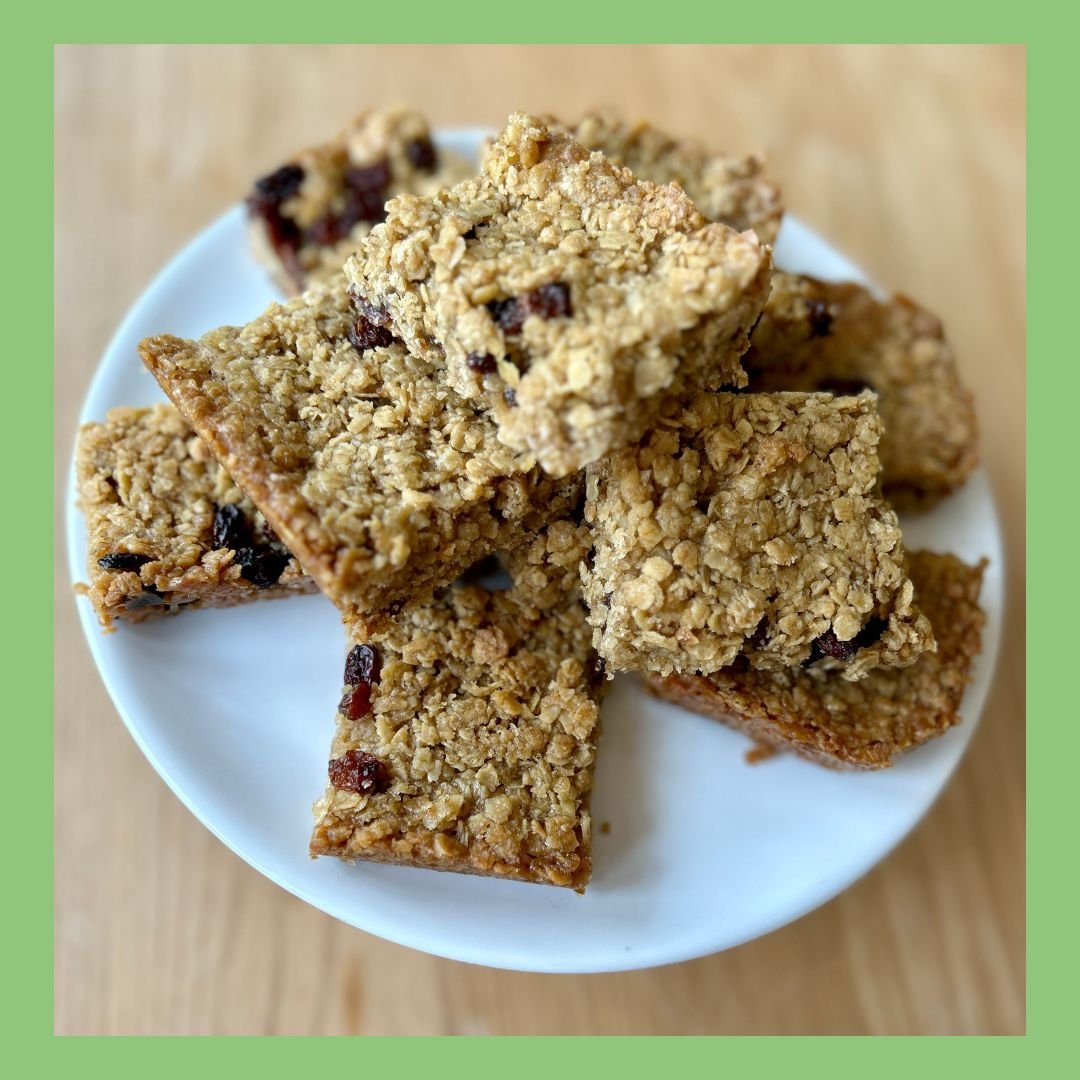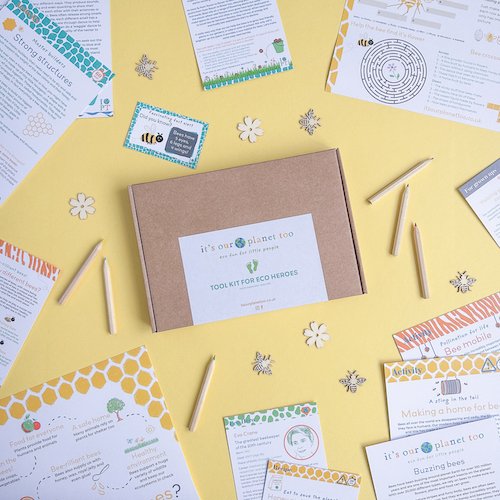Recipe: Honey and raisin flapjacks
Everyone loves a little bit of sweet and delicious honey. But the way it’s made might surprise you!
Every time a honey bee lands on a flower, they will use their long tongue to suck up sugary nectar and store it in their honey stomachs. After visiting lots of different flowers - sometimes between 50 and 100 in one day - the bee will fly home to the hive and pass the nectar on to another bee using their mouths.
As the nectar gets passed from bee to bee, the heat from the hive helps evaporate any water - and slowly but surely the nectar thickens into honey. This honey is then sealed in the waxy cells of the hive to keep it fresh and for the bee colony to use as food.
Unbelievably, it takes honey bees around 4 million visits to a flower to make a single kilogram of honey.
Now let's use some delicious honey to make an easy plastic free lunchbox snack…
You will need
150g margarine
150g soft brown sugar
3 tablespoons honey
300g rolled oats
A good handful of raisins
Instructions
Before you begin, remember to wash your hands.
Line a rectangular tin with baking paper and preheat the oven to 160℃. (Our tin was 30cm x 18cm)
Carefully melt the margarine, butter and sugar in a saucepan over a low heat. Stir gently until the mixture is smooth.
Take the mixture off the heat and stir in the oats and raisins. Mix everything together until it is well covered.
Spoon the mixture into a shallow tin, spreading it out evenly. Push it down with the back of a spoon.
Bake in the oven for around 20 to 25 minutes.
Very carefully remove the tin from the oven and cut the flapjack into pieces whilst it is still hot. Then leave in the tin to cool.
Store in an airtight container when it's cooled... if there's any left!
This recipe is taken from our buzzing bees themed Tool Kit For Eco Heroes.
Each of our themed Tool Kits are packed with hours of activities to gently teach children (and their families) about our environment. Find out more here.


